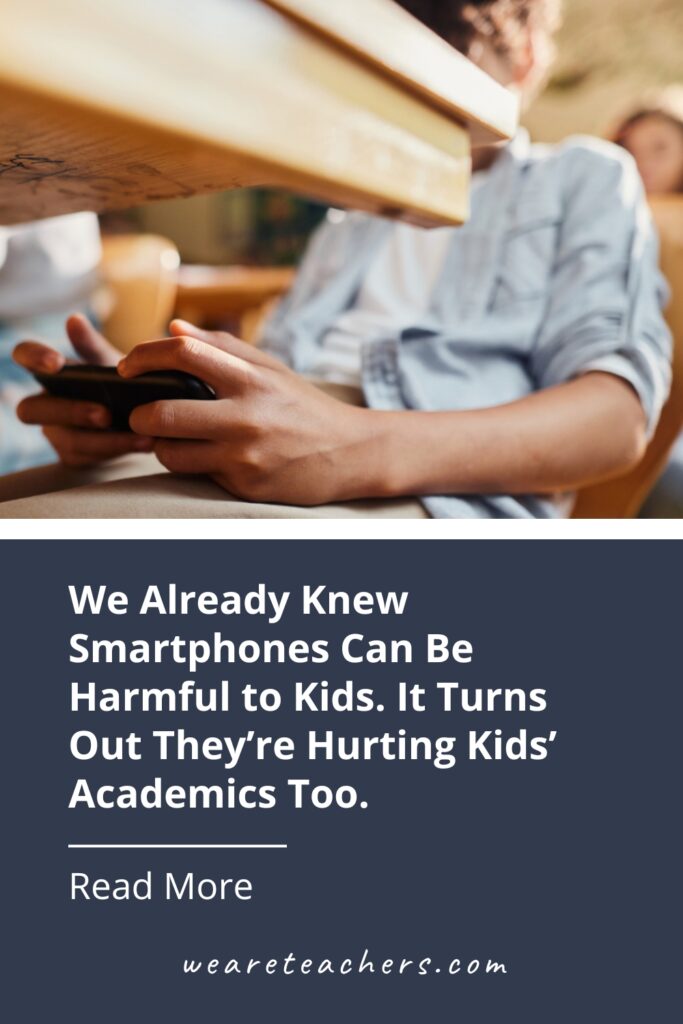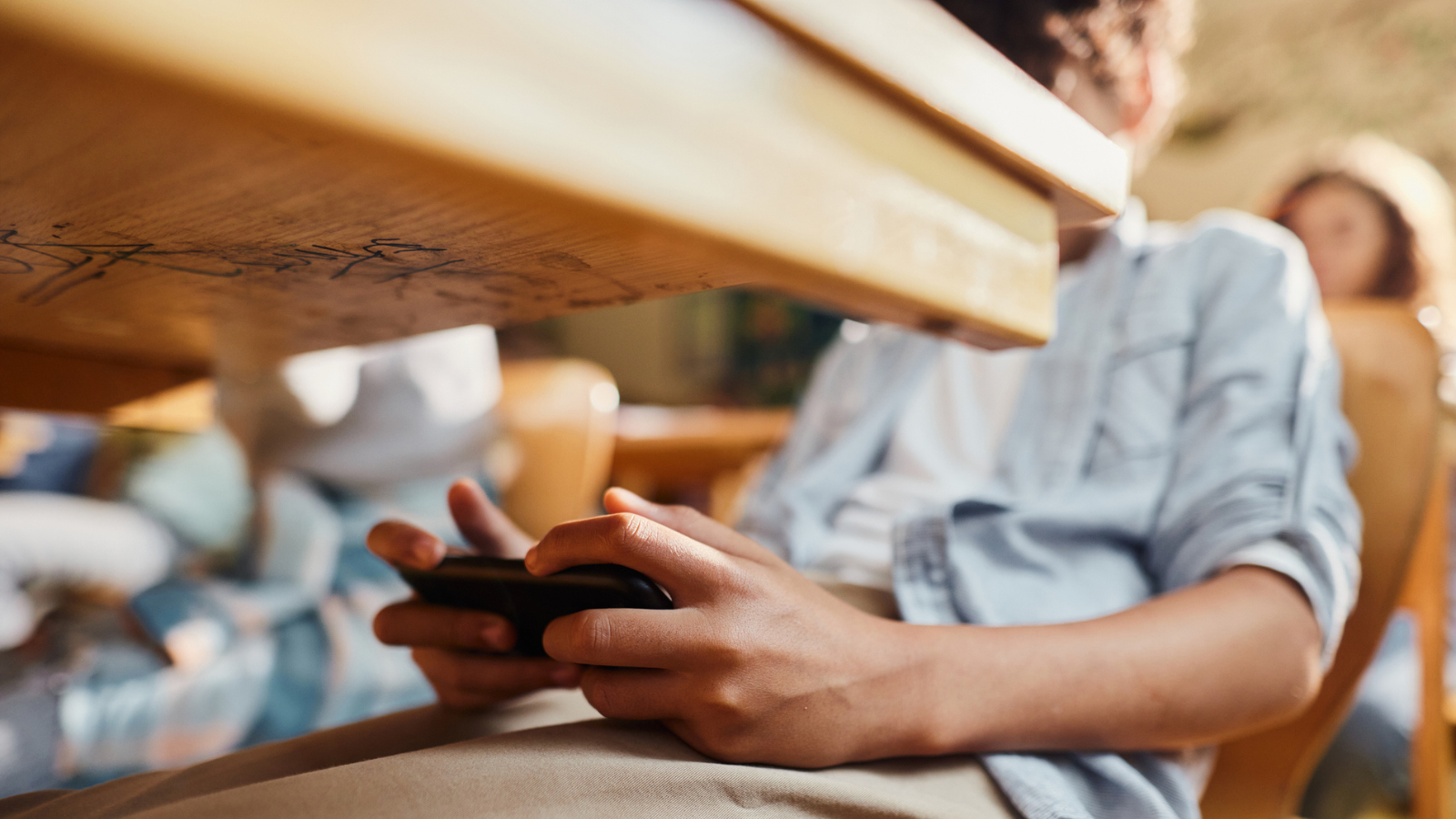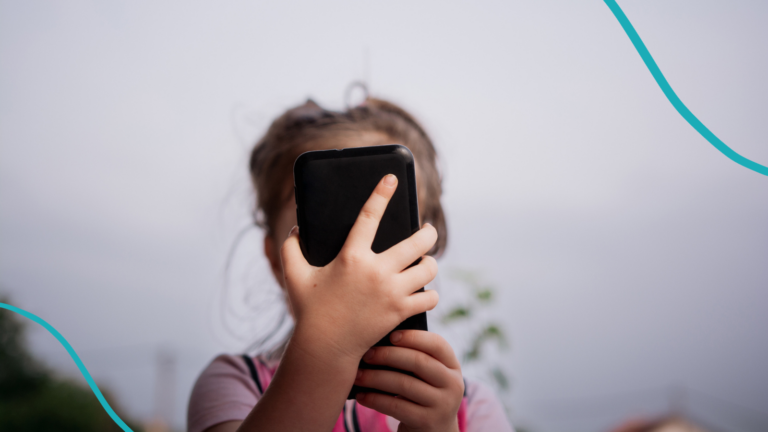Any teacher or parent reading this knows the conversation around smartphones in the hands of children has never been more critical. As educators, parents, and conscious observers of the evolving educational landscape, we are increasingly aware that phones are hurting kids. While the convenience and instant access to information that smartphones offer can be beneficial, it’s crucial to examine the flip side of this coin. The debate isn’t just about keeping students focused in the classroom—it extends to the deeper implications smartphones have on our children’s overall development.
We’ve known that phones are hurting kids’ social, physical, and emotional health.
Many educators, recognizing the downsides, have opted for no-phone policies. We back these no-phone policies, urge schools to rethink the use of district devices, and encourage parents to delay giving their children smartphones. And while we can draw theories as to why an increase in smartphone usage is bad for children, there are some studies that bolster what schools are finding:
- Phones are diminishing real-world interactions and relationships. NPR reports that smartphones and apps are like digital candy for kids’ brains, hooking them with that dopamine rush. This tech addiction often edges out the “real” stuff—chatting with family, playing outside, or actual human contact. It’s not just about missing a family dinner—it’s about losing touch with how to interact, empathize, and be a person in the world outside of those screens.
- Phones are disrupting sleep and contributing to a sedentary lifestyle. Excessive screen time easily connects to a sedentary lifestyle for our kids. Think less movement, more health issues, like obesity. And when it’s bedtime, those smartphones aren’t doing any favors either. The blue light from screens plays havoc with kids’ sleep cycles, leading to poor-quality sleep.
- Phones are exposing kids to harmful content and mental health risks. The stuff kids see on their smartphones, especially social media, is a real emotional roller coaster. They’re bumping into some pretty heavy content—creepy messages from strangers and posts about suicide or eating disorders. This exposure is more than unsettling; it can ramp up their anxiety, mess with their mood, and even lead to long-term mental health issues. And let’s not overlook the overload of sexualized and inappropriate content that’s just a few clicks away.
It’s a minefield out there, and it’s taking a toll on kids’ emotional health.
Now a study is suggesting phones are hurting kids academically too.
A recent rigorous educational study by economists, released as a working paper and involving over 2 million students, reveals a troubling correlation: As 3G coverage expanded, student performance on international assessments declined. This trend is not unique to the United States—it’s a global phenomenon. Though PISA scores have their critics, they provide a reliable indication of worldwide educational trends and the impacts of the pandemic. What’s particularly alarming about the U.S. data is that our students’ test scores have been falling for years.
More researchers gather some theories from these same PISA results, and we list them below.
The most concerning findings from the 2022 PISA Report
- Time spent on devices: Students who spend less than an hour per day on digital devices at school outperformed their peers who are glued to screens for over five hours a day, scoring approximately 50 points higher in math. This gap remained significant even after adjusting for socioeconomic factors. This decline is about four times the learning loss attributed to the pandemic in the United States.
- Distraction in school: Screens are a constant source of distraction, impacting even students who aren’t perpetually on their phones. Those reporting distraction due to their peers’ digital habits scored lower in math.
- Device anxiety: Alarmingly, nearly half of the students across the OECD experienced anxiety when separated from their digital devices, correlating with lower life satisfaction and math scores.
What’s next for schools
In sum, students engrossed in their phones tend to underperform and experience lower levels of life satisfaction as the phones become a source of distraction. The results from the geospatial working paper and PISA report, while associative, are compelling enough to demand immediate action. We don’t need economists to tell us “Cell phones cause X in children” when the evidence is clear and overwhelming. The global experiment on our minds, particularly those of our children, has shown its high cost.
In response, some schools are taking proactive steps, implementing policies that restrict the use of mobile devices during school hours and blocking social media access on their networks. These initiatives are meeting surprisingly little resistance from parents and students, reinforcing the growing consensus that cell phones have no place in the classroom. As educators, parents, and stakeholders in our children’s future, it’s time to prioritize their education and well-being over constant connectivity. By taking a stand against the unregulated use of smartphones in schools, we can start to mitigate their negative impact and foster an environment more conducive to learning and healthy development.
We all want what’s best for our children. It’s time to stop pretending that phones aren’t harming them.
For more articles like this, be sure to subscribe to our newsletters.


